Russian bayonet
History Russian bayonet overgrown with a mass of legends, sometimes completely untrue. Many of them have long been perceived as true.
Perhaps one of the most interesting references to the use of the bayonet, which is now very fond of quoting various domestic and Western "historians", is the words of the greatest commander A.V. Suvorov: "The bullet is a fool, the bayonet is good." Now these words are trying to show the backwardness of the Russian army, in fact, saying that in the hands of the Russian soldier the gun was like a spear. And the function of the shot was absolutely secondary. Alexander Vasilyevich, if he knew about such an interpretation of his words in the future, he would be very surprised.
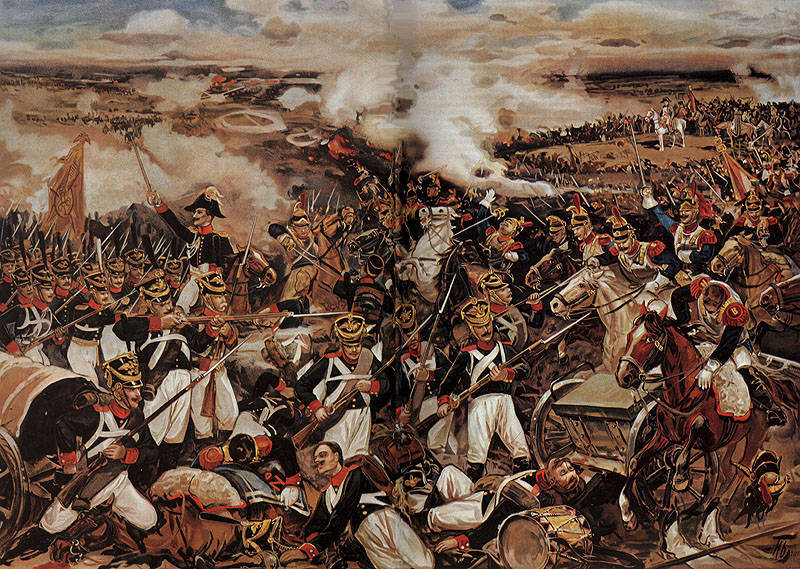
In the original, the words of A.V. Suvorov in “Science to win” sounds like this: “Take care of a bullet for three days, and sometimes for a whole campaign, as there is nowhere to take. Shoot rarely, aptly; Bayonet if firmly. The bullet will obmishulitsya, the bayonet will not obmishulitsya: bullet - a fool, a bayonet - well done. This fragment as a whole completely changes the understanding of the phrase that is usually illiterately snatched from the works of the commander. The commander only calls to take care of the ammunition and shoot accurately and emphasizes the importance of the ability to work with a bayonet. The era of muzzle-loading weapons made her try to shoot accurately, the importance of accurate shooting was underestimated. But smooth-bore shotguns with baggy loading could not provide a high rate of fire, the required accuracy, and good command of the bayonet in battle was very important. This is emphasized by other Suvorov words: “One person can stab three people with a bayonet, four of them, and a hundred bullets fly into the air.”
The Russian bayonet is traditionally needle with a three or four-edged blade, a neck and a tube with a slot for putting it on the trunk. It is now accepted to criticize military officials who have held our soldiers with a needle bayonet for so long, when in many armies of the world a “bayonet”, a bayonet with a knife-like blade and a handle, was already introduced. What only explanations for this do not come up. Perhaps the most absurd thing is that the military officials considered that “bayonet-knives” are of great economic value to the soldier, and they will carry them home from service. And nobody needs a needle bayonet. Such nonsense can be cultivated only by people who are far from military history and who do not at all represent the rules for dealing with state-owned property. It is strange that the presence of full-time besak and other cold soldier’s weapons are not commented on by the authors of this “wild explanation”.
Let us return to the bayonets, so - a bayonet for a muzzle-loading gun. It is clear that the bayonet must be constantly attached, but at the same time allow the gun to be loaded safely for the shooter. These requirements are suitable only for a three-edged bayonet, which has a long neck, diverting the bayonet wedge from the muzzle to a distance that is safe for the hand when loading. In this case, the face turned to the muzzle cut should not be sharp. These requirements are well satisfied with a triangular bayonet with a flat face facing the muzzle.
And were there in the Russian army bayonets? Of course they were. More in the XVIII century. such bayonets were accepted for the chasseurs of Jaeger, at that time they were called dirks. The bayonet, for example, was at the famous Russian littykh fitting arr. 1843 d. A strange picture is being drawn again, why Russian huntsmen and skirmishers did not cut their hands when loading the choke with the knife blade. The answer is simple, the huntsmen and skirmishers solved specific problems with their rifle weapons, in modern terms, they were snipers. As an example, an episode related to the defense of Smolensk in 1812 could be cited. Against the actions of just one huntsman on the right bank of the Dnieper, the French were forced to concentrate gunfire and use artillery, only at night the huntsman stopped. On the morning of the next day, a non-commissioned officer of the Chasseur Regiment was killed by the core. What is the need for a sniper in a bayonet? Only in the extreme case, it is adjacent to the bayonet bayonet.
The very important issue was the length of the bayonet, it was determined for a reason, and on the basis of the most important requirement. The total length of the gun with a bayonet should be such that the infantryman can at a safe distance reflect the saber blow of the cavalryman. Accordingly, the length of the bayonet was determined. Threaded nozzles were shorter than infantry rifles and bayonet-tezak to them, respectively, longer. When fired, he caused inconvenience, outweighed the muzzle of the barrel down, deflected the direction of the bullet.
A rifle with a needle bayonet in the hands of a skilled soldier worked wonders. As an example, we can recall the feat of corporal Leonty Korennogo, in 1813 in the battle of Leipzig in the village of Goss, his unit was trapped by superior enemy forces. Evacuating the wounded, Root with a small number of comrades entered into a bayonet battle with the French, he was soon left alone, parrying the bayonet strikes, he struck them himself, after the bayonet broke, fighting off the butt. When Root, wounded by French bayonets, fell, then there were many French bodies around him. The hero received 18 bayonet wounds, but survived, in recognition of his highest military prowess on the personal orders of Napoleon, he was released from captivity.
As time went on, weapons changed, after the American Civil War, when all the advantages of breech-loading systems for unitary cartridges, characterized by high rate of fire, were revealed, the military began to talk about the senselessness of the bayonet. As with such a rate of fire, the matter will not reach bayonets.
The first Russian breech-loading rifles had triangular bayonets identical to the old guns. This was due to the fact that 6-linear rifles at the beginning of their release were remakes from the old muzzle-loading ones, and there was no point in changing the old bayonet for them.
The first Russian rifle, which was originally designed as a breech-loading, was a 4,2-linear rifle arr. 1868 of the Gorlov-Gu-nius system (“Berdan system No. XXUMX”). This rifle was designed by our officers in the United States and was shot without a bayonet. Gorlov, at his discretion, chose a triangular bayonet for the rifle, which was installed under the barrel. After the shooting with the bayonet, it turned out that the bullet moves away from the aiming point. After that, a new, more durable tetrahedral bayonet was designed (remember that three faces were needed exclusively for muzzle-loading systems). This bayonet, as in the previous rifles, was placed to the right of the barrel to compensate for the derivation.
Such a bayonet was adopted to the 4,2-linear infantry rifle arr. 1870 g. ("System Berdan №2") and, slightly modified, to the dragoon version of this rifle. And here began a very interesting attempt to replace the needle bayonet with a bayonet-cleaver. Only the efforts of the best Russian minister of war in the entire history of our state, Dmitry Alekseevich Milyutin, managed to defend an excellent Russian bayonet. We give an excerpt from the diary of D.A. Milyutin for 14 March 1874 g .: “... again the question was raised about replacing bayonets with headers ... following the example of the Prussians. Three times this issue has already been discussed by persons competent: everyone unanimously gave an advantage to our bayonets and refuted the sovereign's assumptions that the bayonets adjoined the guns only at the time when it was necessary to act with cold arms. And despite all the previous reports in this sense, the question is again raised for the fourth time. With high probability, one can assume the insistence of the Duke George of Mecklenburg-Strelitzky, who cannot allow us to have anything better than in the Prussian army. ”
This issue was finally resolved only in 1876. Here's what DA Milyutin writes about this on 14 on April 1876 G.: “With my report, the sovereign announced to me his decision about the bayonets. The sovereign has long bowed to the opinion of the Duke George of Mecklenburg-Strelitz, so that in our infantry, like the Prussian one, the German cleaver — a bayonet — was adopted instead of our beautiful three-edged bayonet ... and that the shooting was done without a sided bayonet. .. All the minutes of the meeting, with the application of separate notes, were presented by me to the sovereign, who, upon reviewing them, made a decision, ordering to introduce new bayonets — headers and firing without closed bayonets only in rifle battalions and in the guard; in the whole army leave as before. Thus, there is a new complication, a new variegation; again the lack of unity and uniformity, so important in the organization and formation of troops. Nevertheless, this decision is still preferred to the one whom he feared and to which the sovereign was noticeably inclined so far. ”
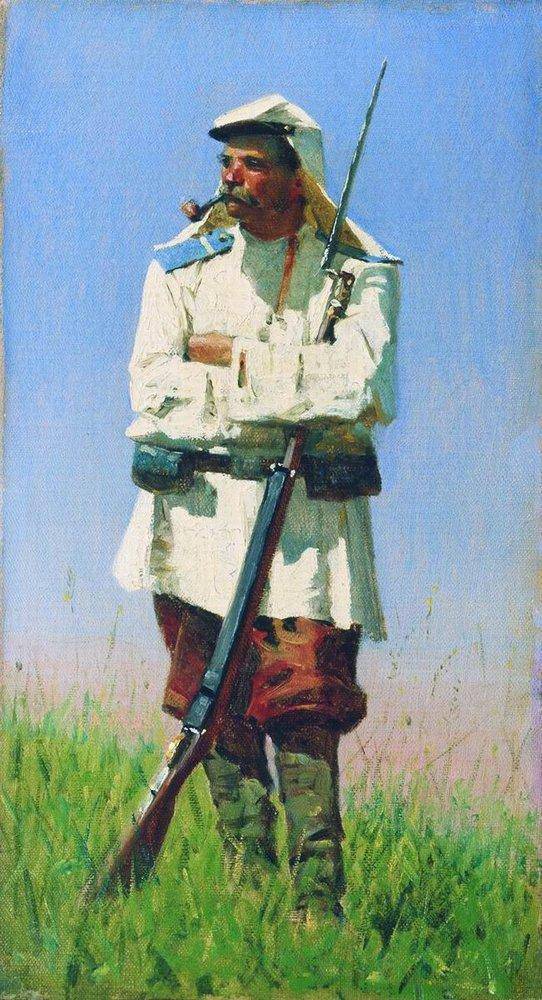
Thus, for the sake of Germanophiles in Russia, the Prussian cleaver drove out the Russian bayonet, contrary to all common sense and the opinion of qualified specialists. But ... in fact, except for experiments and experiments, it did not work. And the needle tetrahedral bayonet remained in its place.
Soon the Russian-Turkish war broke out (1877-1878). The army of the Russian Empire for the first time entered into such large-scale hostilities with high-speed breech weapons. When the main apartment of the Russian army consisted of an American military agent engineer-lieutenant F.V. Green, who collected data in the interests of the US Government. He was instructed to collect materials on the effectiveness of the use of sabers and bayonets in combat. This was due to the fact that the Americans wanted to abandon both, but were afraid to make a mistake. After receiving the prescription, Green conducted a mass of conversations about the bayonet with Russian officers, and among them met only "hot defenders of this type of weapon." In his report, the lieutenant completely denies the opinion of the American command about the impossibility of a bayonet battle in terms of the use of rapid-fire weapons and notes the opposite, that during the campaign very often, melee combat would decide the outcome of the battle. He described the tactics of attacking with chains, when chains move, using shelters of the terrain, the first chain suffers greatly, and numerous subsequent ones break into the trenches or, as they were called then, rifters. And then the enemy either runs, or gives up, or a quick hand-to-hand fight begins.
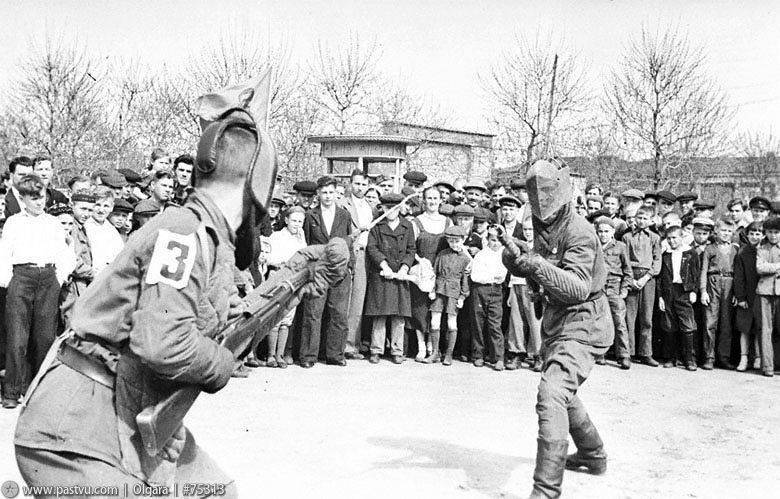
As the American notes, usually the Turks fled or surrendered. But it was not always so. In 1877, in the September battle of Lovce, the Turkish redoubts were surrounded, the Turks refused to surrender, during the attack all the defenders (about 200 people) were split by Russian bayonets. In September, a detachment of General Skobelev attacked two Turkish redoubts and riflemen south of Pleven, from which the Turks were able to knock out only with bayonets. The fortifications on the right flank of Gorniy Dubnyak during the October battles were also misled. 1878, the January battles at Sheinovo, the attack on the fortified Turkish positions ended in hand-to-hand fighting, after 3 the minutes from its beginning the Turks surrendered. Under Filippo-lem, the guardsmen captured 24 Turkish guns, and a hand-to-hand fight ensued, in which Turkish soldiers and officers were wounded by 150 bayonets. The bayonet worked always and worked perfectly.
The 1 January battle of 1878 at the Mountain Bogrov is very significant. Russian units defended, the Turks attacked. The fire on the Turks was opened from a distance of 40 yards (approximately 40 m), the Turks suffered serious losses, some of the survivors rushed back, and some - in the Russian fortifications, where it was slaughtered. On examination of the corpses, it turned out that some of them had pierced skulls with rifle butts. This fact was explained as follows: the soldiers there were recruits; if they were more experienced, they would work with bayonets.
Green comes to one very important conclusion: during a short-handed hand-to-hand fight, only those with attached bayonets are victorious. It is impossible to reload weapons during such a battle. According to Green's estimates, on 90 thousand killed in that war, 1 thousand died from the bayonet. And there is no better weapon for hand-to-hand combat than a bayonet.
Here it is time to recall one more interesting feature of the Russian bayonet, its sharpening. Very often it is called screwdriver. And even very serious authors write about the double purpose of the bayonet, they say, they can both stab the enemy and unscrew the screw. This, of course, is nonsense.
For the first time, the sharpening of the blade of a bayonet was not on the point, but on a plane similar to a screwdriver's tip, appeared on newly manufactured bayonets to the Russian rapid-fire 6-linear rifle mod. 1869 g. ("System Krnka") and tetrahedral bayonets to the infantry 4,2-linear rifle mod. 1870 g. (“System Berdan №2”). Why was she needed? Clearly do not unscrew the screws. The fact is that the bayonet must not only be “thrust” into the enemy, but also quickly extracted from it. If the bayonet sharpened to the point pierced the bone, then it was difficult to extract it, and the bayonet, sharpened on the plane, as if bypassing the bone, without getting stuck in it.
By the way, another curious story is connected with the position of the bayonet relative to the trunk. After the Berlin Congress 1878, when withdrawing its army from the Balkans, the Russian Empire presented the young Bulgarian army with over 280 thousand 6-linear rapid-fire rifles mod. 1869 G. "systems Krnka" mainly with bayonets arr. 1856 g. But it was transferred along with a lot of rifles and bayonets to rifled guns arr. 1854 G. and to earlier smoothbore. These bayonets were normally attached to the “Krnki”, but the blade of the bayonet was not located to the right, as expected, but to the left of the trunk. It was possible to use such a rifle, but accurate shooting at the same time from it without exchanging a shot was impossible. And besides, this position of the bayonet did not reduce the derivation. The reasons for this incorrect placement were different slots on the tubes, which determine the method of fastening the bayonet: arr. 1856 was fixed on the front sight, and bayonets to 1854 systems and earlier were fixed on the under-barrel "bayonet rear sight."
And so the years passed, and the epoch of the shop weapon came. The Russian 3 linear rifle already had a shorter bayonet. The overall length of the rifle and bayonet was less than that of previous systems. The reason for this was the changed requirements for the total length of the weapon; now the total length of the rifle with a bayonet should have been above the eyes of a soldier of medium height.
The bayonet still remained close to the rifle, it was thought that the soldier should shoot accurately, and when the bayonet was attached to the rifle, shot without him, the aiming point changed. That at very close distances is unimportant, and at distances around 400 steps, it was already impossible to hit the target.
The Russo-Japanese War (1904-1905) showed a new battle tactic, and with surprise it was noticed that by the time of the melee the Japanese soldiers had time to attach the blade bayonets to their Arisaks.
bayonet to 3-linear rifle arr. 1891 g., Bayonet to the 3-linear rifle arr. 1891 / 30 g., Bayonet to ABC-36, bayonet to SVT-38, two types of bayonets to CBT-40
Despite the changed situation, the bayonet remained popular and in demand. Moreover, officers with their lower ranks were taking from a dead and wounded rifle with a closed bayonet, being more confident in the bayonet than in his sword.
As time went on, the question of replacing the bayonet with a cleaver was not forgotten. As before, the main task in solving it was the problem of shooting with and without a bayonet.
The sided bayonet bayonets did not allow accurate shooting, therefore it was possible to open fire with a sided bayonet only as an exception. With needle-faced bayonets, where the neck rejects the blade at some distance from the axis of the bore, shooting is not a problem.
Arguments of supporters of one or another point of view on bayonets were very consistent. Supporters of the bayonets of the hawks pointed to the development of handguns: with an increase in the range, the beginning of the battle was tied at sufficiently long distances, which eliminated the need for melee fights. The retreat of one or the other side occurs under the action of only fire contact, bayonet battles in modern wars are encountered less and less, and the number of wounded and killed with knives is reduced. At the same time, the needle bayonet, always attached to the rifle, still, albeit slightly, affects the shooting accuracy. Its weight, applied to the muzzle part far from the fulcrum of the rifle, is tedious by the arrow. This was especially considered important when a soldier enters a battle already weary. Further, it was stated that the needle bayonet, except for the attack, is useless in all cases of combat and field life, with a bayonet-knife, it replaces the lower ranks of the knife, is used when chopping firewood, setting up tents, etc. The requirements of instantaneous abutment of an open-cutter, according to its propagandists, were fulfilled, since the procedure itself is simple and does not require much time. If necessary: at posts, on guard, in secrets, etc. heaths bayonets should be attached. If a soldier needs to leave somewhere without a rifle, he will always be armed with a cleaver. Constantly closed bayonet makes the rifle longer, the bayonet in the forest clings to the branches, making it difficult to carry a rifle across the shoulder on the running belt. A bayonet, hanging on the belt, avoids these difficulties.
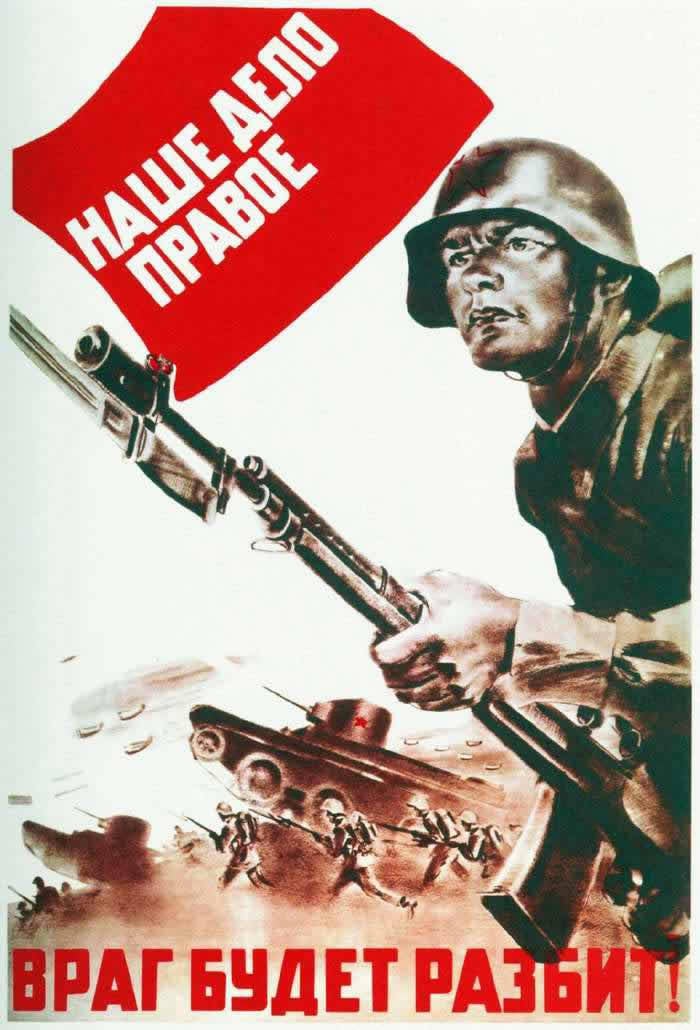
The question of replacing the needle bayonet was considered in great detail in the Russian army and at the beginning of the 20th century, and what is very important - the arguments for it significantly outweighed the arguments set forth above against.
So what was said in defense of the constantly closed needle bayonet? To meet all the conditions of the battle, it is necessary for the infantry to be armed with such weapons, which would allow the enemy to be attacked both from afar and in battle "chest with chest." So that an infantryman would be ready to act with both firearms and edged weapons at every minute of the battle. The adjoining of bayonets before an attack presents significant difficulties, the battle conditions are so varied that it is impossible to determine in advance the moments in which troops must have bayonets attached. The need for a bayonet in battles can come suddenly, at a time when hand-to-hand combat is not expected.
The adjacency of the hacks when approaching the enemy entails the most adverse consequences: in this period of the battle, people are in such an excited state that they may not at all join the bayonet. In addition, for adjoining the bayonet in battle, not as little time is required as it may seem. Experience has shown that in order to remove and attach a bayonet, it will take time, corresponding to at least 5 - 6 shots. At a time when the lower ranks will abut bayonets, the fire should significantly weaken, and this can have dire consequences. In this case, the closer to the enemy will be the junction of the bayonet, the more fussy and slower it will be executed.
Thus, our rifle with a constantly closed bayonet fully satisfies all the conditions for firearms and hand-to-hand combat.
Mentioned harmful effects of the weight of the bayonet on the results of shooting are insignificant. In combat, it rarely happens that it is accurate to shoot while standing without shelter, in most cases shooting is lying, and there is always the possibility of putting the gun on a support or resting the elbow on the ground. As for the impact of the bayonet on the accuracy of shooting, then, firstly, the bayonet attached to the right reduces the derivation, and secondly, in our rifle system, the bayonet affects the accuracy of the fight. With a properly attached bayonet, the radius of the circle containing all the bullets is less. This phenomenon is explained by the fact that when firing with a bayonet from our rifle (with the adopted barrel length, weight of parts and charge, etc.), the jerking of the barrel muzzle is smaller, and the bullet gets a more uniform direction.
The decision taken in the Western European armies, to shoot without a bayonet and adjoin it only when approaching the enemy on the 300 - 400 steps, slightly contributes to less fatigue of the shooter, but on the other hand, the accuracy of the system loses. Shooting from a rifle without a bayonet, adjusted with a bayonet, without moving the front sight gives such results that with a distance of 400 steps you can no longer be expected to have a shooting mark.
The needle bayonet gave more dangerous non-healing wounds, ensured better penetration of thick clothing.
The decision taken in the Russian army - to fire at all distances with a bayonet attached, with which the rifle targets, is the most correct one.
Years passed, August came 1914. Russia entered the First World War. New types of weapons did not reduce the relevance of the bayonet. Russian bayonet ceased to be only Russian.
Trophy Russian 3-linear rifles arr. 1891 (the “Mosin system”) was massively used by Germany and Austria-Hungary. In Austria-Hungary, both trophy and ersatz bayonets of Austrian production of excellent quality were used with them. They differed from the original only in the slot in the tube, which the “Austrians” had straightforward. The sheath for the original and ersatz-bayonets were iron with characteristic hooks for the Austrian sheath. The German sheath for bayonets for the Mosin 3-linear “rifle” could be of two types: iron, similar to Austrian, but with the drop-shaped hook shape characteristic of the “Germans”, and galvanized tin ersatz.
In the Austro-Hungarian army during the First World War were captured and captured Russian rifles "system Berdan №2." Leather and iron sheaths were made for their bayonets. A certain number of bayonets for the “Berdan rifle No. XXUMX” were converted into bayonets for the rifle arr. 2, the “Mannicher system”, by welding the handle of a Manlichera bayonet to the blade.
The Bulgarian army from 1882 to 1913 received from Russia about 180 thousand infantry rifles "Berdan system No. XXUMX" and 2 thousand dragoon rifles of the same system. All of them were equipped with infantry and dragoon bayonets. The Bulgarian army also was in service around 3 thousand Russian 66 linear rifles "Mosin system", which in 3-1912. were delivered from Russia. In 1913, Austria-Hungary handed over to Bulgaria allied aid -1917 thousand rifles of the “Mosin system”, converted to the patron of Mannicher arr. 10. Bayonets for them were in metal Austrian and German sheath.
The war ended, the Russian bayonet proved to be excellent. But his time was irretrievably gone. The battle conditions were changing, a new automatic weapon appeared. And for the first time massively already in the Red Army the bayonet came in 1936, it was a bayonet to the Simonov automatic rifle arr. 1936 g. Soon new self-loading rifles of Tokarev SVT-38 and SVT-40 are beginning to come into service. Only at that historical stage and only with the use of fast-firing, quickly rechargeable rifles, with the extensive use of automatic weapon fire, the needle-bayonet surrendered.
And to be our army with a new rifle and a new bayonet, if not for the war. June 1941, a powerful blow to the German army, inability to take decisive action and outright sabotage of the military leadership of the Soviet Union allowed the Germans to capture a significant part of our country as soon as possible. The production of the “trilinear” was forced, the bayonet was still needle-like, but modifications of 1930 were already. In 1944, the new 3-linear carbine was adopted, it also had a needle bayonet, but of a different design. The bayonet was fixed on the carbine and reclined forward if necessary. The last needle-bayonet in the history of the Soviet army was a bayonet to the Simonov self-loading carbine arr. 1945. Soon after the start of production, the needle bayonet to it was replaced with a knife-like one. From that moment on, the old needle-shaped bayonets in the USSR and Russia have not returned.
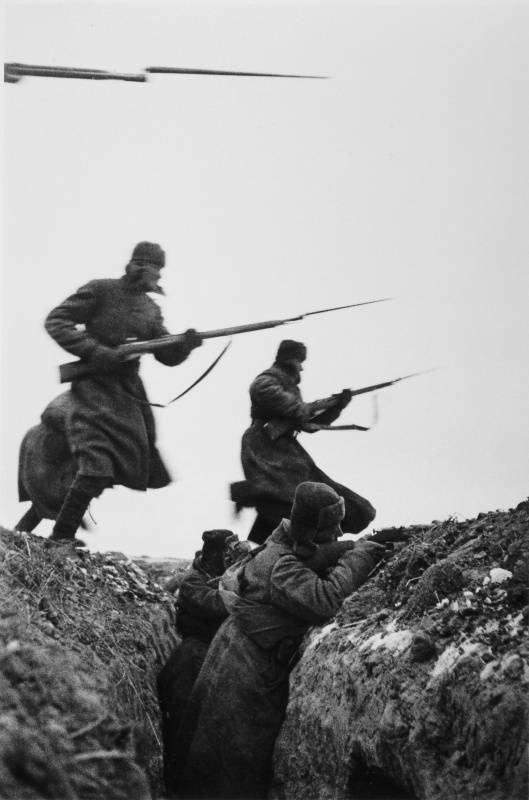

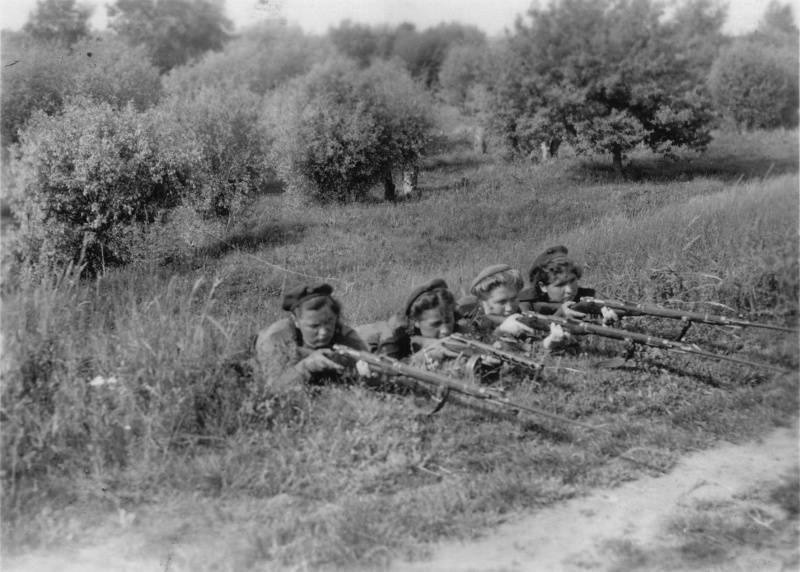
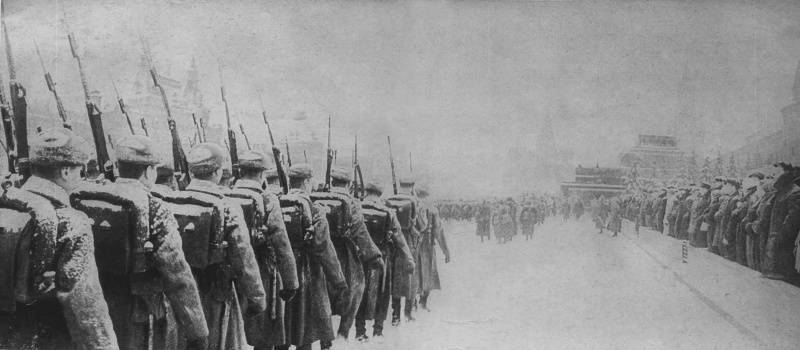
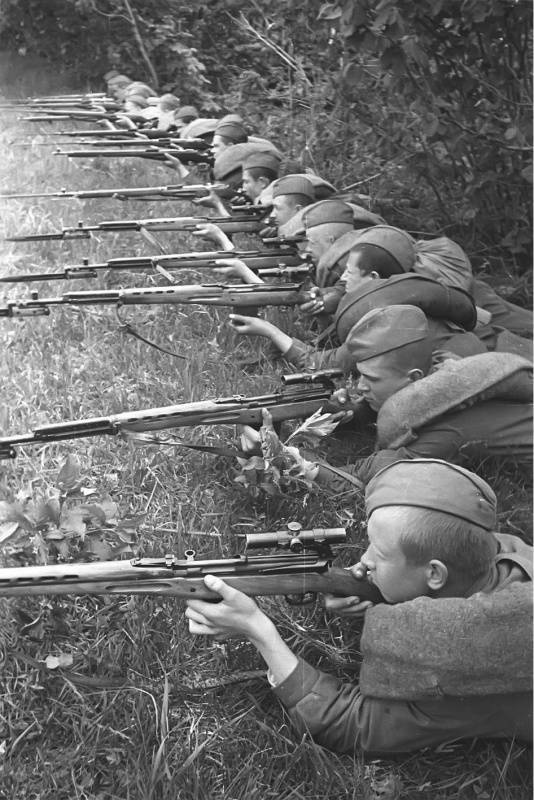
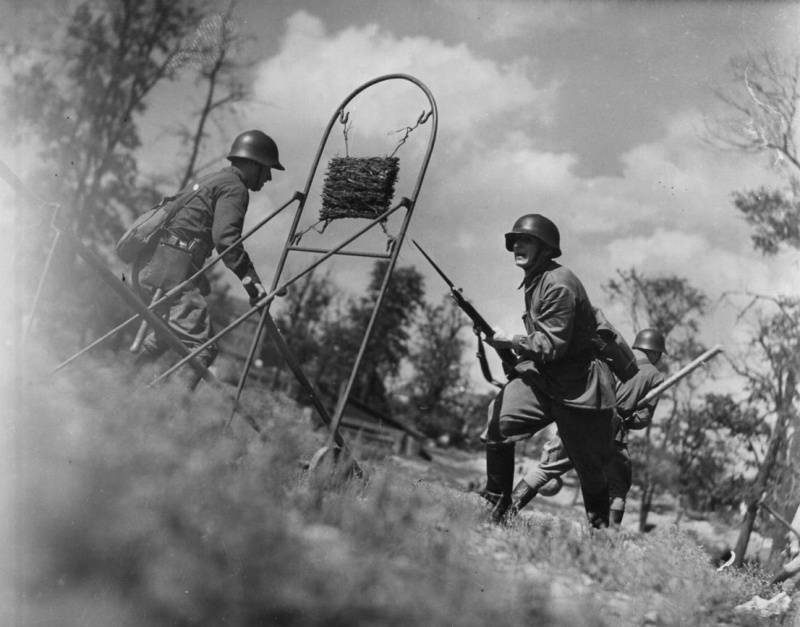
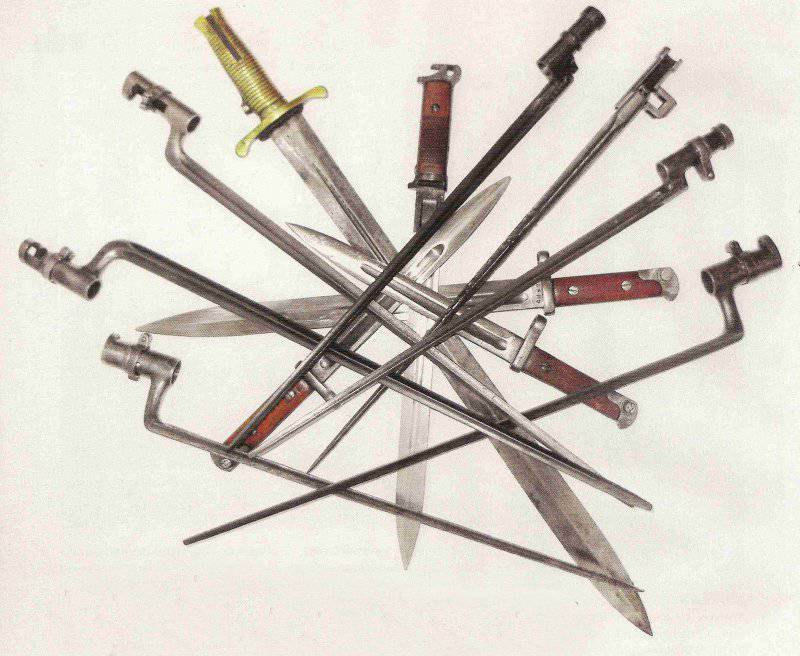
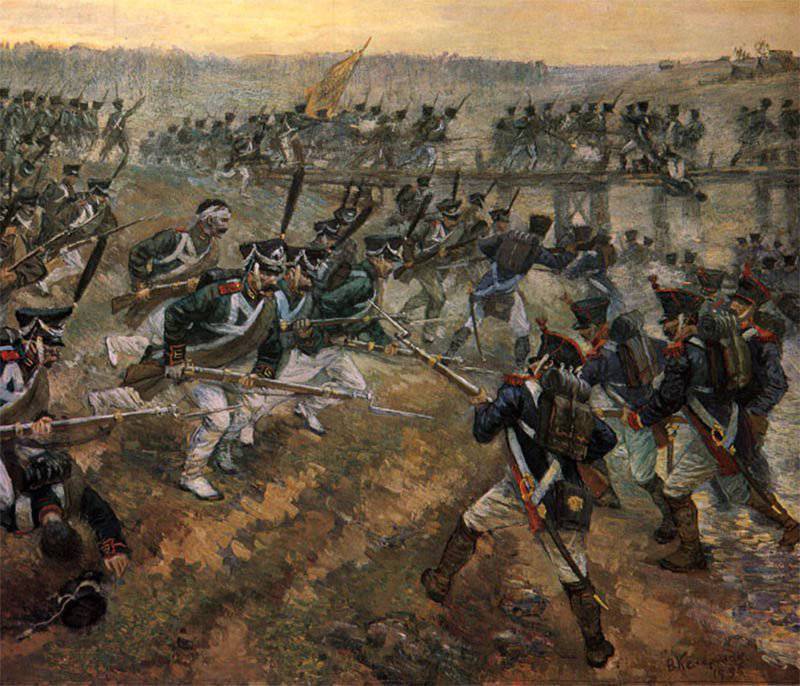
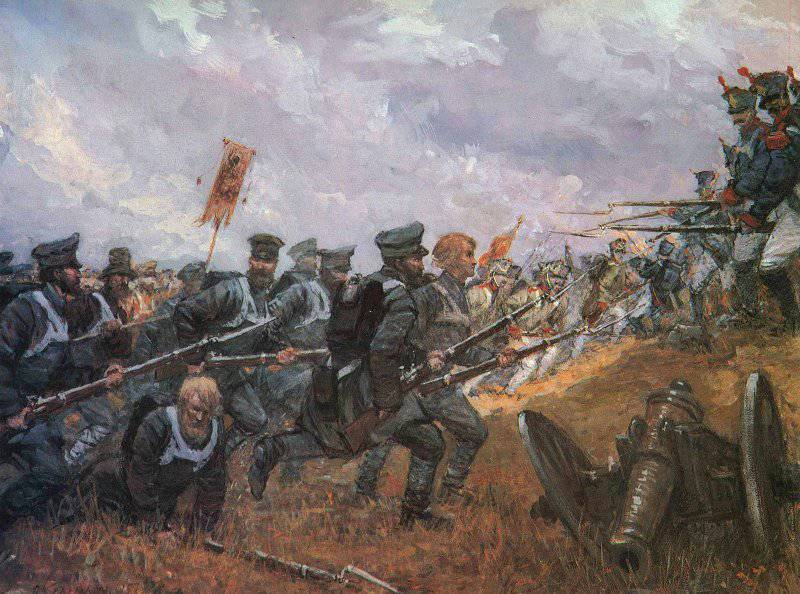
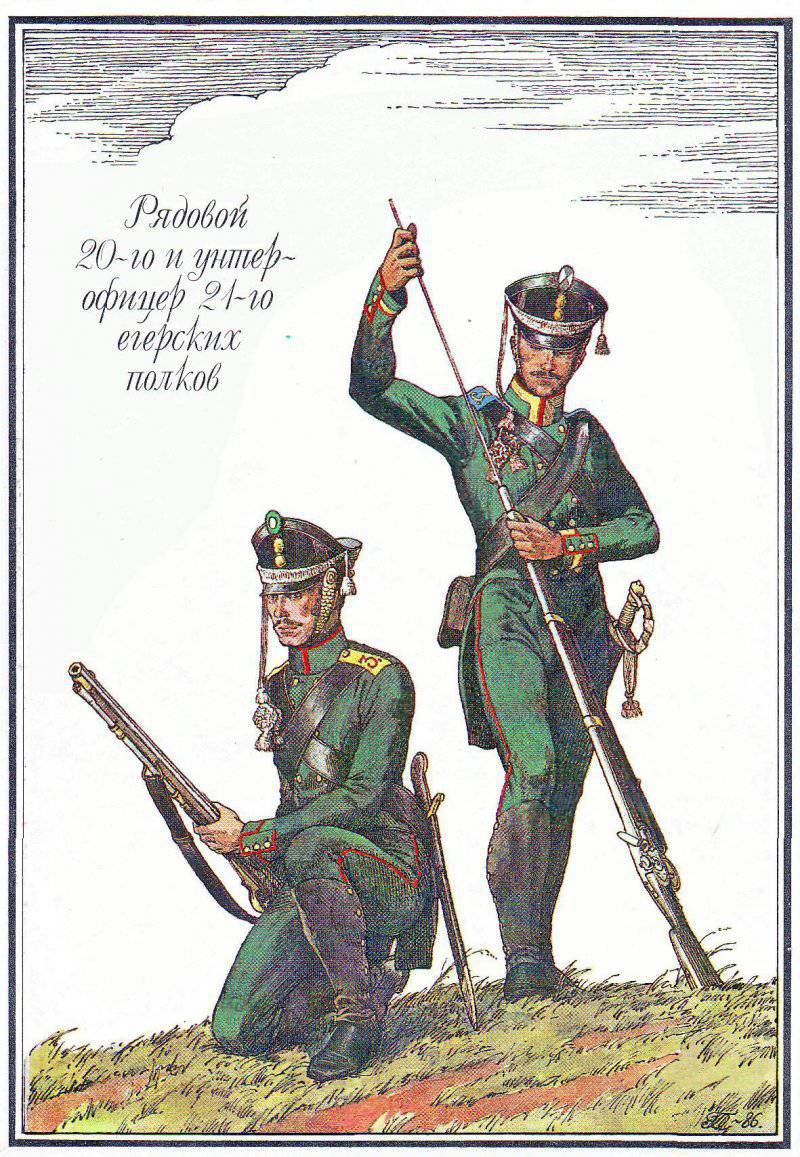


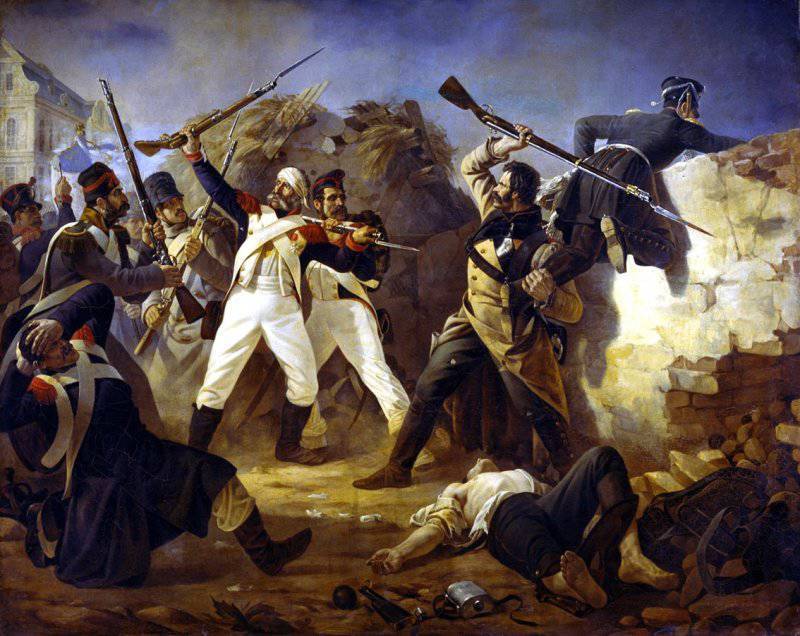



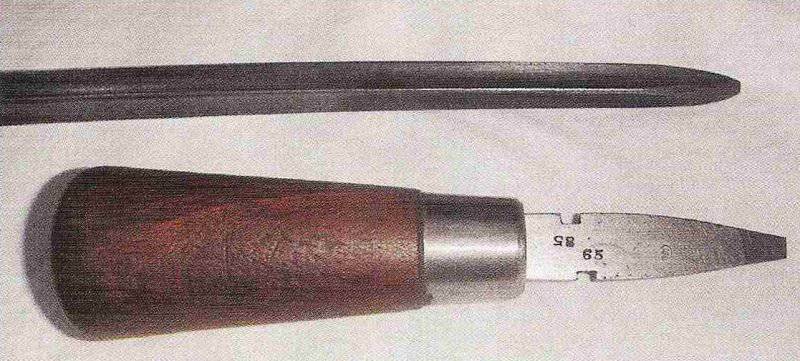
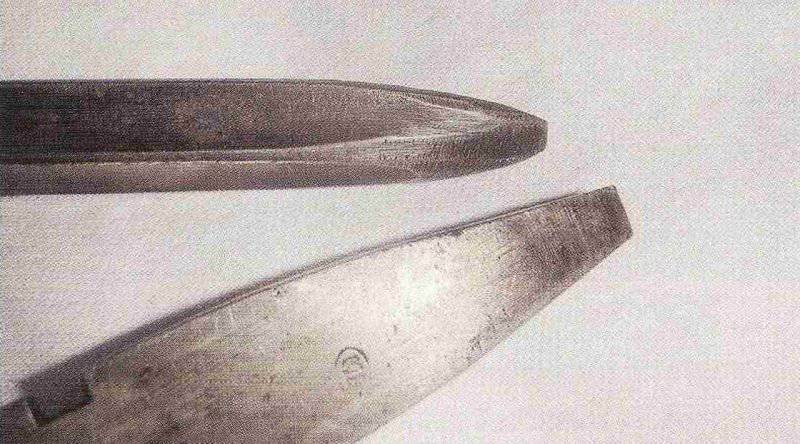
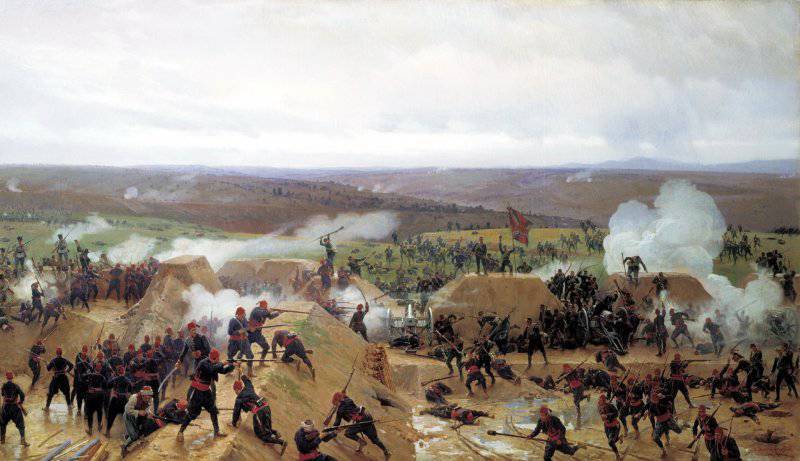
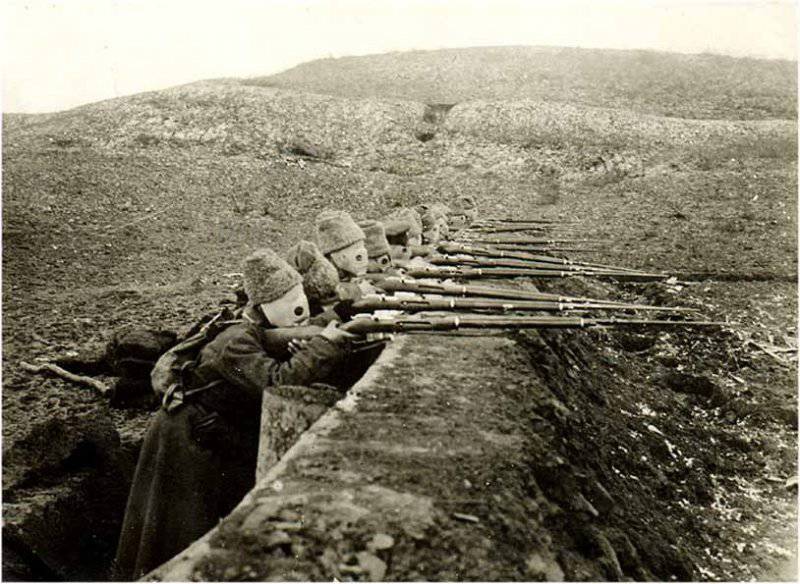
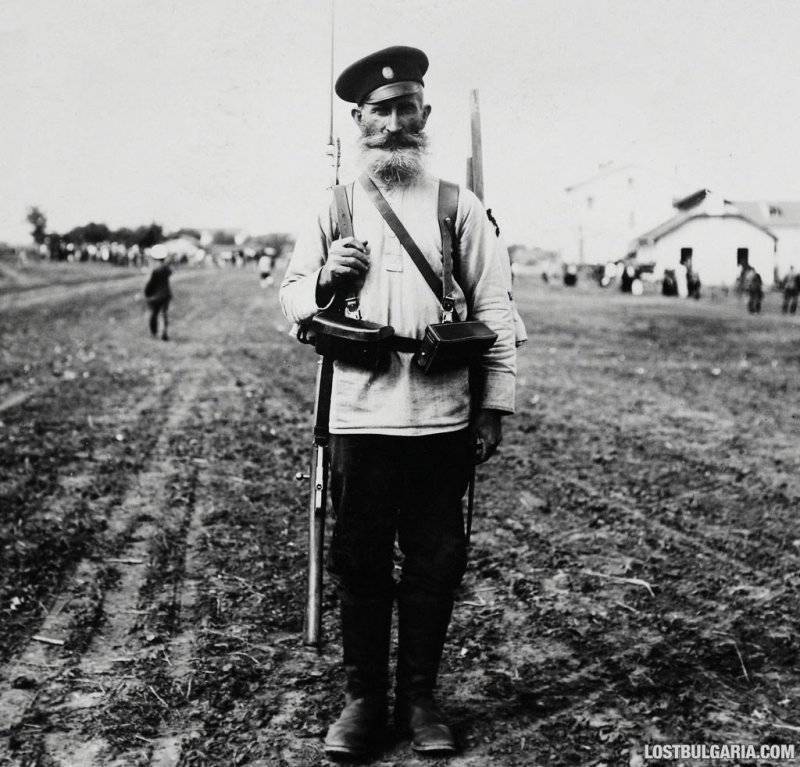

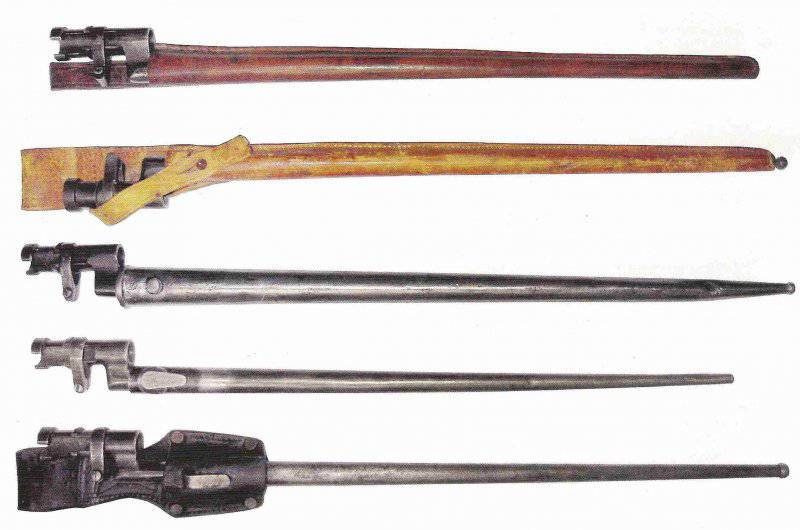
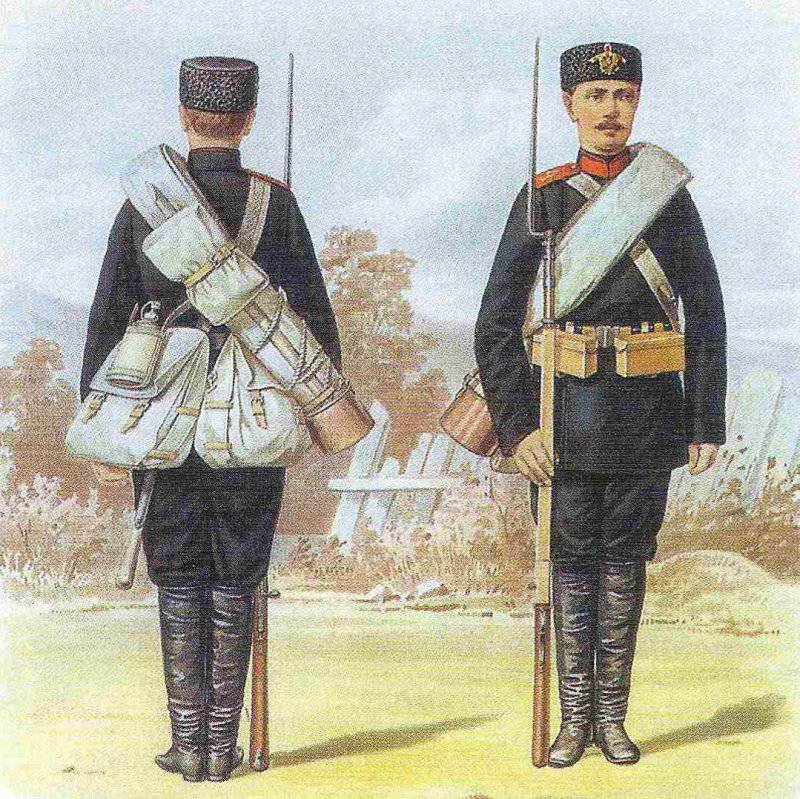
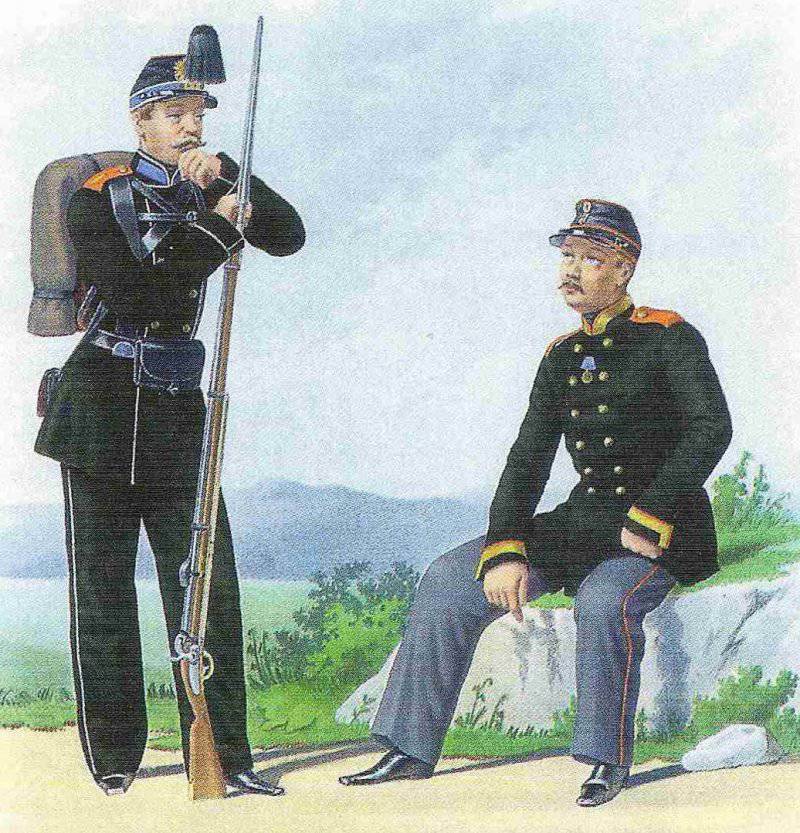
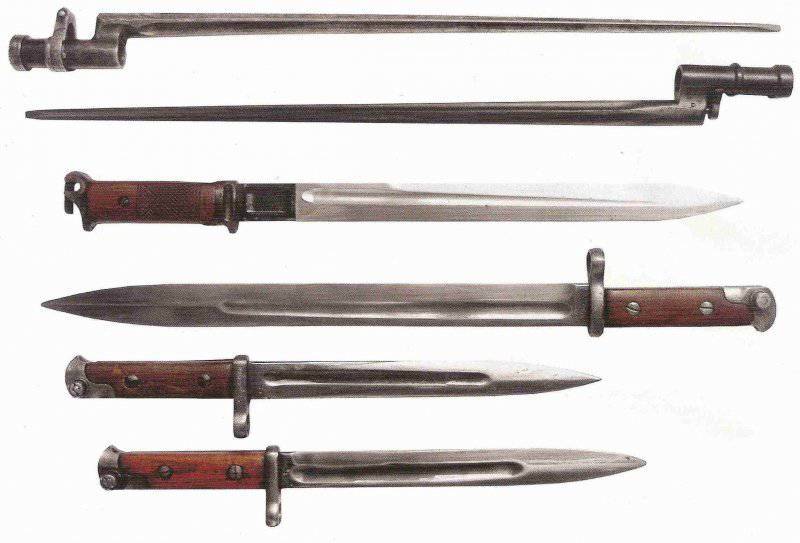
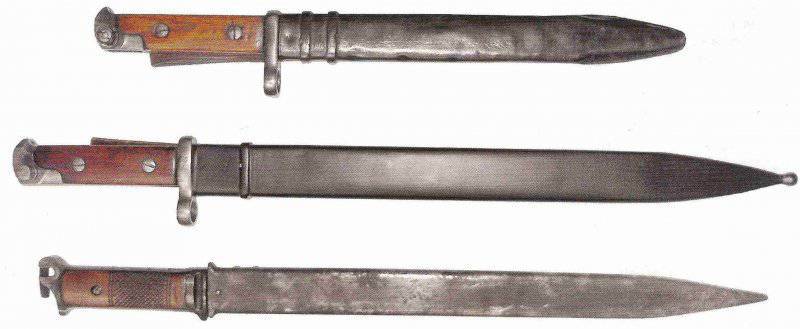
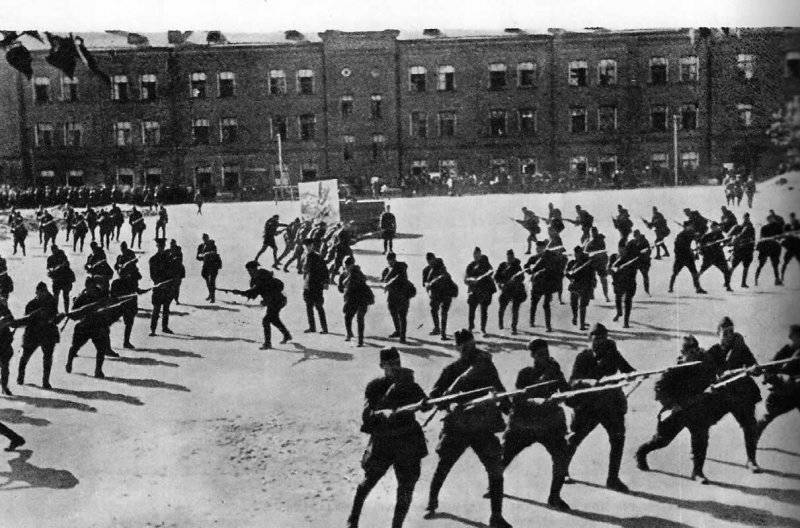
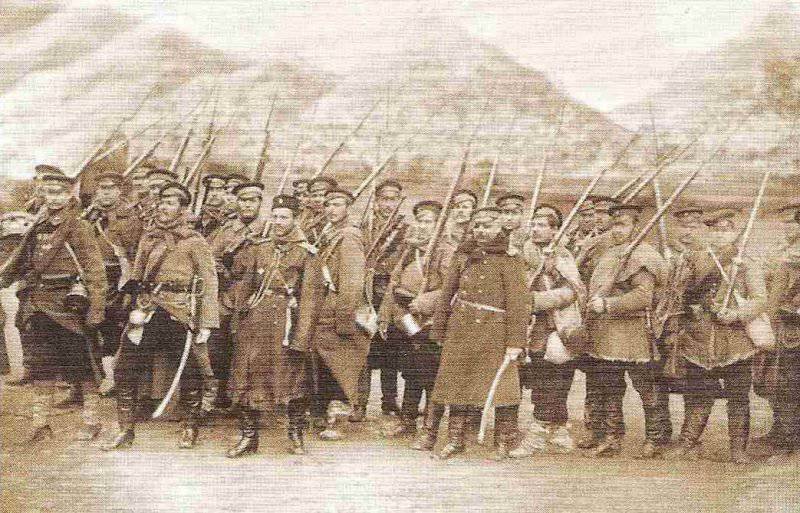
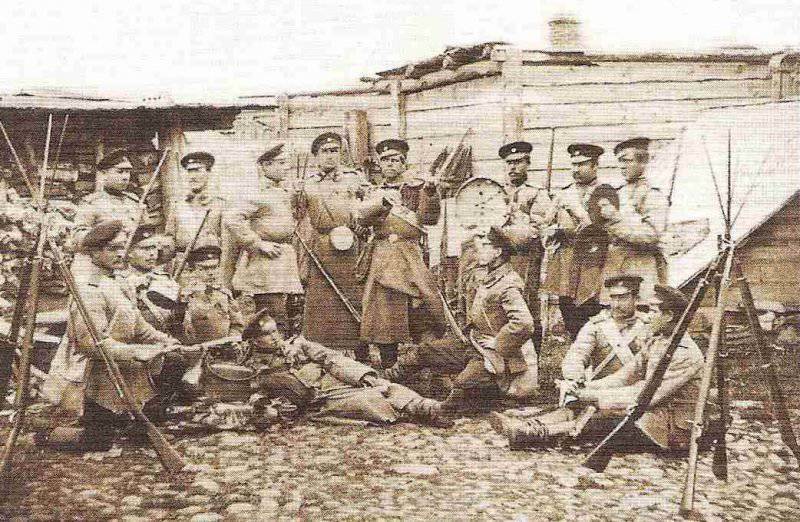
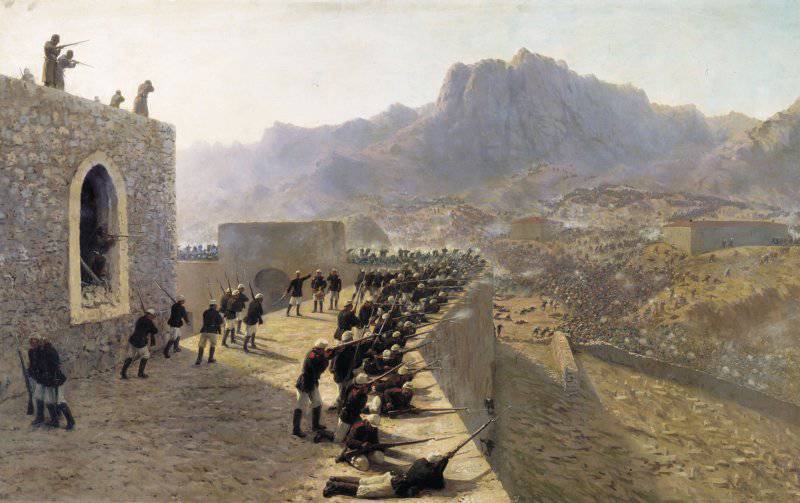
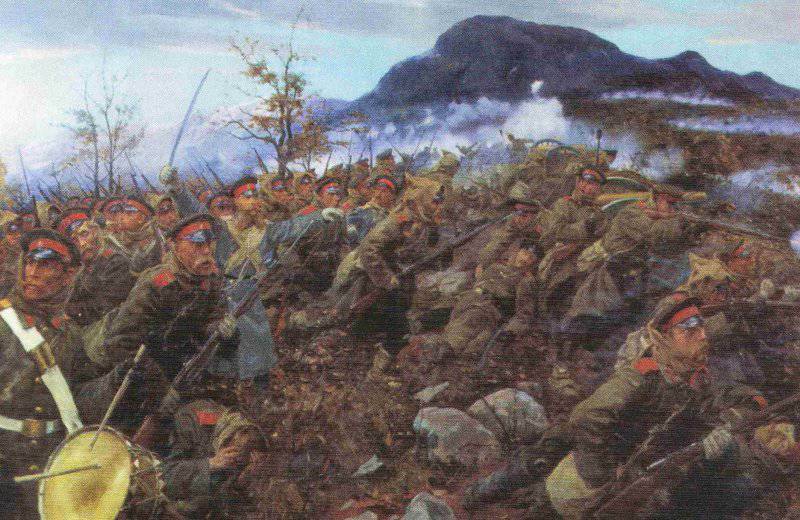
Information